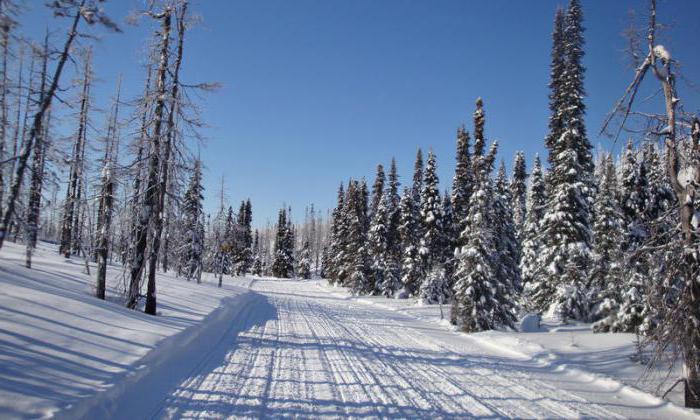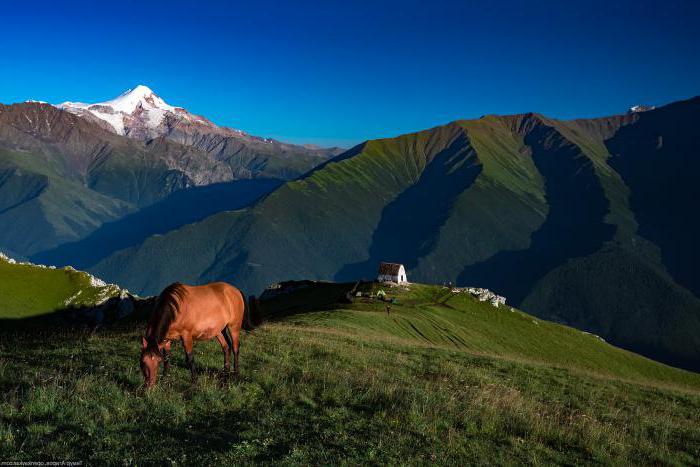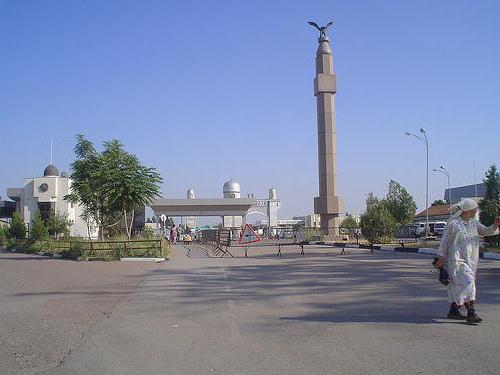The enormous length of the borders of the Russian Federation is determined by the corresponding dimensions of its territory, as the largest world power. Of the 60,932 kilometers of total length, Russia's land borders on the map are more than 36% - 22,125 kilometers. Borders along the seas of the Arctic and Pacific Oceans are located in the north and east, and the land borders of Russia extend in the west of the country and in the south.
New borders of the Russian Federation
A border is a line that runs along the surface of the Earth and sets the limits of the jurisdiction of a given state. This line is fixed by legal documents between states (delimitation), and is also fixed by border signs on the ground (demarcation).
As a result of the collapse of the Soviet Union, Russia found itself in a difficult position, as new borders appeared that were previously considered administrative and internal. They had to be equipped, which would require enormous costs. At the same time, the old borders were on the borders of the former union. Given the countries with which Russia has a land border, all the borders of the Russian Federation can be divided into several groups.
1. Old that Russia inherited from the Soviet Union: with the countries of Northern Europe, Poland, as well as with China, Mongolia and the DPRK. They are equipped and mostly demarcated.
2. Administrative borders with the former republics of the union, which have now become state borders. They can also be divided into two groups:
- with the CIS countries ;
- with the Baltic countries.
These borders are still insufficiently equipped and transparent. Not everyone went through delimitation and demarcation to the end. All controversial issues have not yet been resolved and not all borders are fully protected. To better imagine what land borders Russia has, it is possible to conditionally divide them into the following sections.
Northwest
The northernmost part of the land border of the Russian Federation passes beyond the Arctic Circle. Russia's land neighbors in the northwest are, first and foremost, Norway. Its length is small - less than two hundred kilometers and it goes along sections of the tundra and river valley, not having sufficiently pronounced natural landmarks. Norwegian and Russian power plants are located along the border and the construction of transport routes is planned. This border line has remained unchanged and stable since 1826 after years of disputes between the two states over the possession of the Kola Peninsula. Currently, there are no disputes between Norway and Russia. From the Russian Federation, the Murmansk region adjoins the border.

Further, Russia has a land border with Finland with a length of about 1,300 kilometers, passing along a small hill, swamps and lakes - it was established after the Paris peace treaty in 1947. There are also no noticeable natural boundaries. On the Russian side, three regions border on Finland - the Murmansk region, Karelia and St. Petersburg. This site is important for foreign trade.
The special situation of the Kaliningrad region
The Kaliningrad region, located on the Baltic Sea coast and is a semi-exclave of Russia with access to the sea, has a border with Poland for 250 kilometers, and also with Lithuania - 300 kilometers long, which runs along the Neman River. The demarcation with Lithuania was framed in 1997, but some controversial issues have not yet been resolved. There are no contentious issues regarding the borders with Poland.
Borders with the Baltic countries
Passing along the lake-river landscape, small hills, the western border approaches the Sea of Azov. On this site, some neighboring Russian states make claims on small disputed territories. For example, Estonia and Latvia claimed the land of several districts of the Pskov region with a total area of more than three thousand square kilometers. The length of the Belarusian-Russian border line is a thousand kilometers. Of all the countries with which Russia has a land border, it is the most stable, and there are no territorial problems between the countries, and since 2011 there are no forms of border control. It can be freely crossed at any time and in any place. This section remains the most important transportation hub connecting Russia with European countries.
Border with Ukraine
Russia has a land border with Ukraine with a length of about 1,300 kilometers, and the main controversial point here is the Crimea. The common borders of the three republics — Ukraine, Belarus, and Russia — were determined during the Soviet period, and after the end of World War II, the territory of Ukraine increased due to the lands that had moved away from Eastern European countries to the Soviet Union. On the Russian side, Ukraine is bordered by several regions - this border line was formed at the end of the 20s of the 20th century, and in 2014 relations between the countries escalated due to the Crimea peninsula, which Ukraine considers its territory. However, the transfer of Crimea to Ukraine in 1954 was not entirely constitutional, and Sevastopol was earlier assigned the status of a separate administrative center of republican significance, and there was no decision to transfer it at all. Due to the tense situation between the countries, Russia is forced to think about laying new railways.

Alpine borders of Russia
The land borders of Russia in the south originate in the Psou river valley and pass along the Main Range of the Greater Caucasus, and then continue along the Samur River valley to the Caspian. The neighboring states of Russia on this stretch of more than a thousand kilometers are Georgia and Azerbaijan. Here, the border clearly passes along the natural boundaries, since harsh mountain conditions did not allow settling at such a height. However, this border region is the most problematic of all with which countries Russia has a land border. Extremely difficult natural conditions, ethnic diversity of the population and tense political situation are typical for this site. Eternal snows on the peaks of the Caucasus mountains, steep passes with glaciers are natural obstacles to objectively determine the exact extent of the border. Such data are necessary for the arrangement of the border and ensuring its security. And this, in turn, is associated with huge material costs.

Transport links on the Caucasian border
Transport communication with the Transcaucasian countries is also problematic. Of the two cross-border railways, only one is fully operational - connecting Azerbaijan with Dagestan. The second, passing through Abkhazia, does not work due to the political and economic sanctions of Georgia against Abkhazia. Two road routes to Georgia are laid through passes, but they also require significant repairs. There are still trails and hiking trails, but they are suitable for use only in the summer. Natural barriers and complex political relationships impede the establishment of economic ties. The problem is that in Soviet times the entire infrastructure was formed as a single complex of enterprises, it requires the joint operation of facilities.
Problems of the Caucasian border
The unrecognized republics of Abkhazia and South Ossetia are located in this region. To determine the borders, first of all, it is necessary to resolve the conflict between these entities and Georgia. Plots passing through the territories of the republics of the CBD, KCR and Ingushetia have already been agreed upon, but many questions of principle between Russia and Georgia have remained unresolved. Basically, the border line with Azerbaijan was agreed, but some controversial issues remain here.
However, the biggest problem in this region is armed conflict, extremism and interethnic conflicts, which pose a threat to the integrity of Russia and neighboring states. In these conditions, the migration factor acquires a significant role. In addition, the process of recognizing the new borders by the peoples of the Caucasian republics is difficult. Especially if they do not coincide with ethnic borders. Therefore, one of the tasks facing the border services is also the establishment of relations with the local population. Nevertheless, this section of the border is gradually being built up and cross-border relations are being established with the Transcaucasian services.
Border with Kazakhstan
The land borders of Russia stretch from the coast of the Caspian Sea along the desert steppes of the Caspian lowland to the Altai mountains for more than 7,500 kilometers - the border with Kazakhstan, the largest in length and marked by natural landmarks only in Altai. The countries have already signed a delimitation agreement. This border between Kazakhstan and Russia is a unique phenomenon in world practice, not only the length of the joint border, but also significant transparency. It should be noted that it shares countries with different religious traditions. Sufficiently comfortable landscape conditions make the border areas convenient for transport links. Since in the Soviet period a unified not only production but also transport structure was created, many roads and railways cross the former administrative, and now state border, sometimes several times. In recent years, both countries have been trying to reduce the dependence of their transport links on the neighboring side. To this end, new roads and railway lines are being built.

Chinese expansion to Russia
The land borders of Russia from Altai to the Pacific Ocean mainly pass through mountain ranges. The length of the joint border line with Mongolia is almost 3,000 kilometers. The countries have long signed agreements on the delimitation and demarcation of the joint border. Relations have long been built on the basis of friendship and mutual cooperation.
Mentioning with which countries Russia has a land border, it is worthwhile to dwell in more detail on the relations between Russia and China. The border with China is unique in that, sharing the various political, civilizational systems, it is nevertheless not an obstacle to the demographic expansion of this country into Russian lands. This expansion is not only through the Russian side, but also Kazakhstan, due to its transparency. Indeed, part of the border of the Russian Federation with the PRC is now a joint border line of China, on the one hand, and Kazakhstan, Kyrgyzstan and Tajikistan, on the other. Now the length of the border line between China and Russia is more than 4,000 kilometers.
China border demarcation
The demarcation agreements were almost ready in 1999, however, questions remained unresolved regarding two small sections, which contain the danger of complicating relations in the future. The final demarcation of the border occurred in 2005 as a result of territorial concessions from Russia. At present, China receives much more benefits from its border position than Russia. She is forced to solve the difficult problem of illegal Chinese labor migration and smuggling.
The length of Russia's land borders with North Korea is just over 17 kilometers, and it goes along the Tumangan River - this is the shortest of all sections of the border. On a small island of this river is an unusual place. it meets the borders of three states - Russia, China and North Korea. All agreements on the delimitation and demarcation of borders between the DPRK and the Russian Federation have been signed, and there are no territorial disputes.